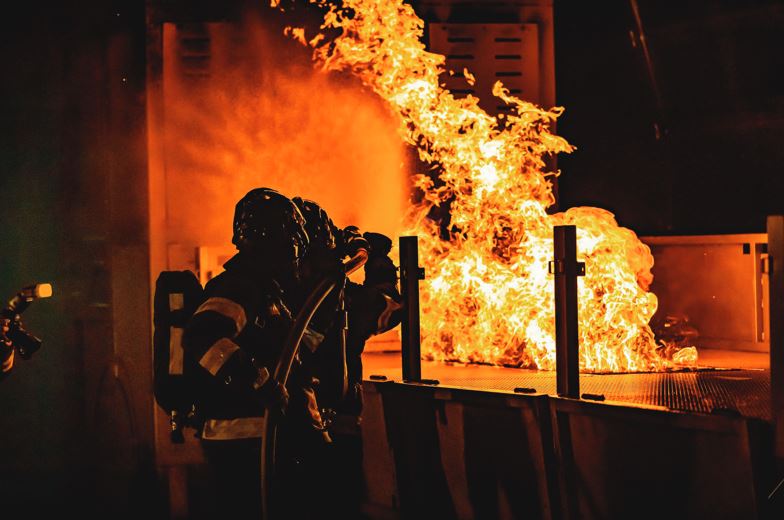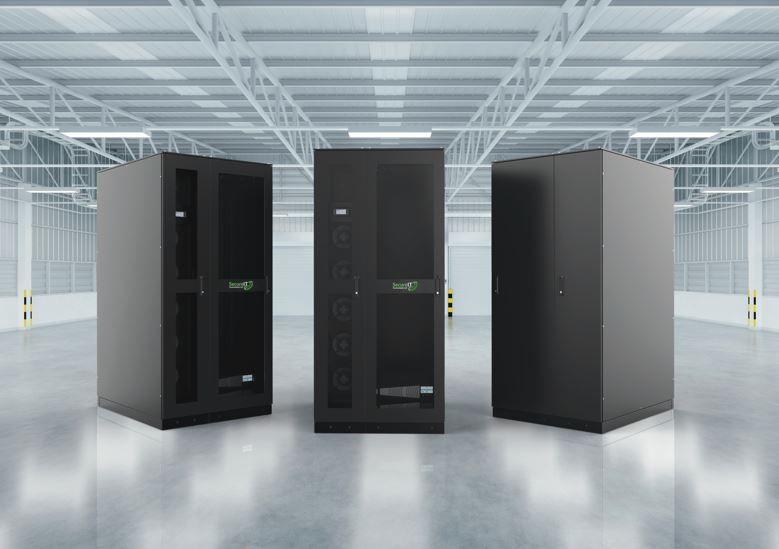
Chris Wellfair, projects director at Secure I.T. Environments, speaks to hdm about the rise of micro data centres in healthcare settings and what it takes to protect them from fire when they are often out of sight
Data centres are getting smaller all the time and this has been a huge benefit to healthcare settings across the UK as they come to rely increasingly on a digital world. Whether supporting communications, imaging scanners, or storage at various locations across a hospital site, they are finding a role in every aspect of patient care, from the operational tasks of running a hospital to making it easy for staff to access the resources they need, wherever they are.
In the past building a data centre would have been a substantial undertaking requiring a large room or area of a site to be set aside, taking a long time to plan and build, and inevitably leading to disruption.
In some cases, a building or site may have planning restrictions that limit where a data centre can be located either due to listed status or because of its proximity to residential areas. And, for those settings in inner city locations, it can be a case of simply not having the space available.
A small wonder
Micro data centres are one of the key solutions to these problems and are enabling hospitals across the UK to upgrade and expand their digital offering, avoiding some of these challenges mentioned. These centres can house the same technical equipment a traditional data centre might rely on beyond the servers themselves, including uninterruptable power supplies, cooling, environmental monitoring, power distribution, and fire suppression. All of this power can be housed in discrete cabinets, located in spaces that would have been unthinkable before: plant rooms, disused cupboards or verysmall rooms. They can even run silently in offices or under a desk. One of the key considerations for any data centre, though, is ensuring it, and the surrounding area, are protected from the risk of fire. While many data centres are regularly staffed, or at least visited, several times a day; by design, micro data centres are not always visible or are stored in locations where, if they caught fire, might go unnoticed until the fire-rated cabinet was breached, an external room alarm triggered, or, worst of all, a fire door breached.
Of course, any public building will have in place a number of fire protection measures and systems, as well as complying with building regulations. But what is happening inside the micro data centre cabinet, and the processes in the data centre, matter just as much as whether the cabinet is fire rated.
Fire suppression configuration
The goal of any fire suppression system that is activated is not simply to put the fire out, but to minimise damage and make it possible to resume operations as quickly as possible. This is one of the reasons gaseous fire suppression systems are used as these starve the fire of oxygen and/or reduce the ambient temperature, quickly extinguishing it, while preserving other assets in the cabinet. However, preserving those assets is not just about the method used to directly deal with the fire.
It is critical to ensure control panels are configured to not only alert teams to the fire, but to shut down the systems in the cabinet in a controlled, pre-defined order. This should include all servers, power supplies, cooling, and air handling systems. The control should also trigger the switchover of services to a back-up if they are regarded as mission critical.
Maintenance and testing
Fire suppression maintenance should be part of the standard preventative maintenance programme in any organisation, with both IT teams and facilities managers involved in the process.
Testing should be conducted at regular intervals and must cover all aspects of the system, including the full shutdown and restart procedure for the cabinet, associated monitoring and alert systems, as well as ensuring all staff are following procedures. This may highlight training needs, which again should also be conducted regularly and be part of the induction process for people that work in the immediate are of the data centre.
Location, location, location
Wherever your micro data centre is located, it is important to ensure that combustible materials are not stored closely to it and that the cabinet is not seen as a convenient shelf that becomes slowly buried under detritus. A fire extinguisher should also be easily accessible.
Environmental monitoring
The fire suppression system will activate when a fire is detected, but the risk of fires can be avoided if the correct environmental control systems are in place in a cabinet. Server and ambient temperature, for example, can provide a clear early
indicator of problems – if a device is getting too hot due to a failed fan, or working too close to its peak processing loads, for example. Fluctuations in power demands can also highlight issues with a power supply or server, where an electrical component may be slowly failing.
Critically, this system should be providing pro-active alerts to teams, enabling them to investigate reports of key performance indicators operating outside what would otherwise be regarded as ‘normal’. Like the fire suppression system, the environmental monitoring system should be able to control the environmental conditions within the cabinet and manage the shutdown of critical components where a risk of failure is imminent.
Know where your assets live
Over time, organisations can lose track of what assets they have and where they are located; and this can have serious implications, particularly for IT assets, where a device may ‘fall off’ the maintenance programme or miss crucial software updates. Equally, if an alert is raised, or a fire response triggered, teams should know exactly where that asset is located so they can respond quickly. With this in mind it is really important to ensure there is a detailed asset register that is regularly updated and integrated into the monitoring and fire suppression control systems. Micro data centres offer a huge number of benefits for healthcare settings. They hold significant processing power in small spaces and house all of the support infrastructure that would be found in a traditional data centre. But the key to their success is to treat them in exactly the same way as any other data centre, complete with the processes and technology to minimise downtime and protect them from risk.
